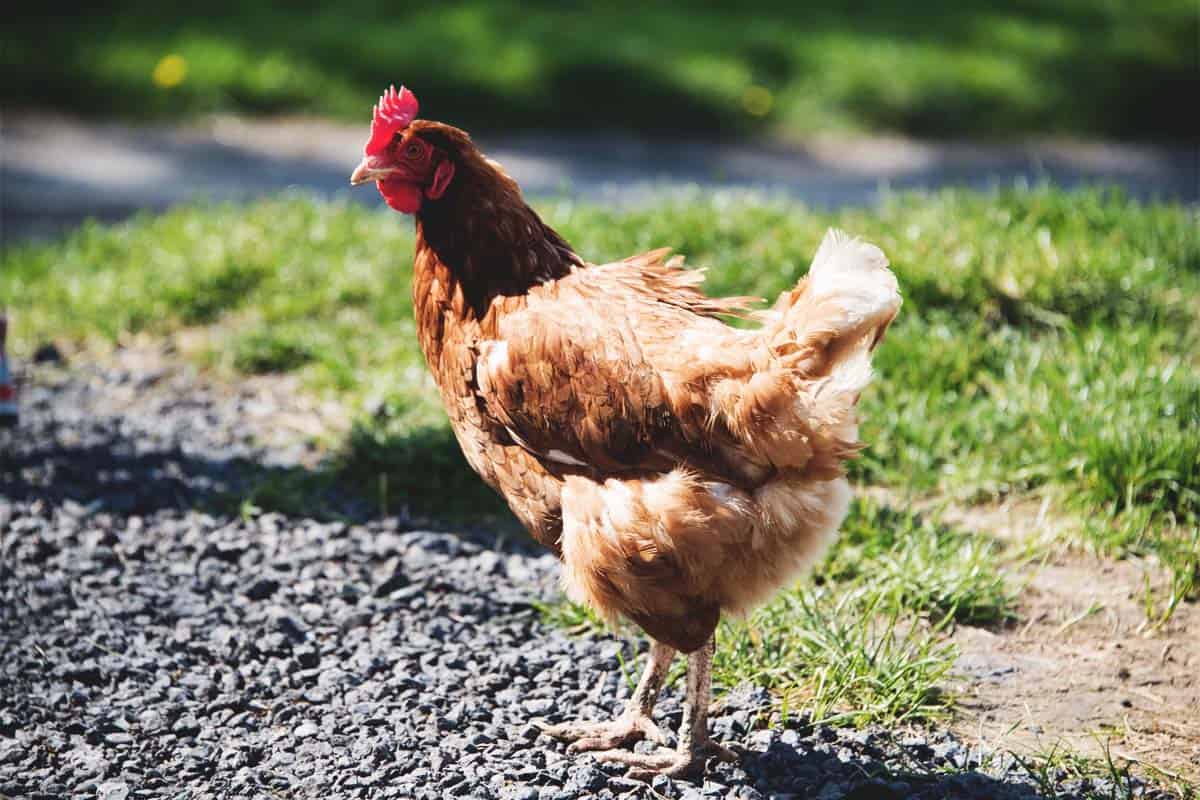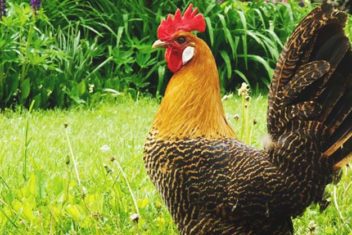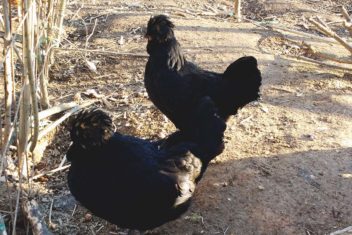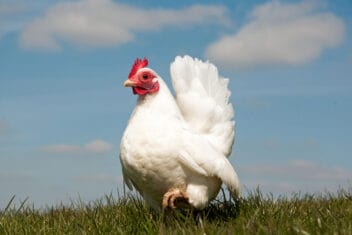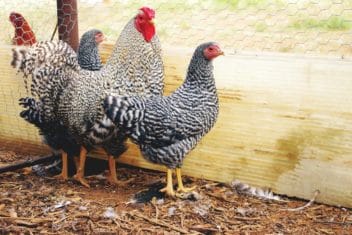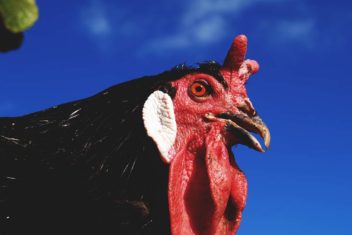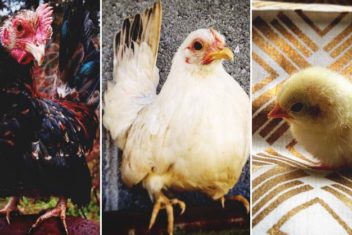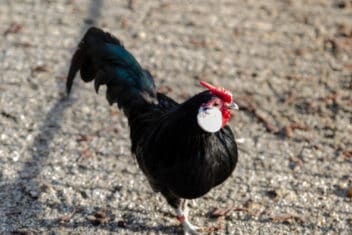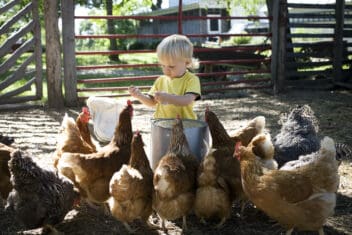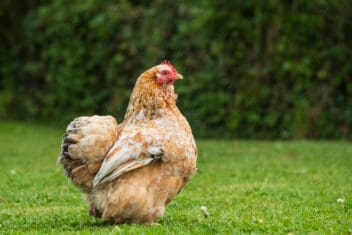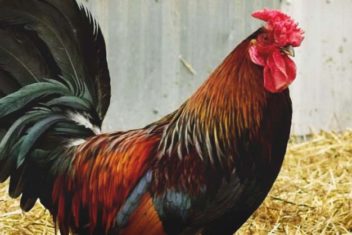Not everyone has heard of Catalana chickens, but that doesn’t mean they aren’t an excellent breed.
Catalanas were bred to be a hearty dual-purpose breed that is especially tolerant of hot climates. For those that like to keep rare chickens on their farms, Catalanas will likely fit the bill quite well.
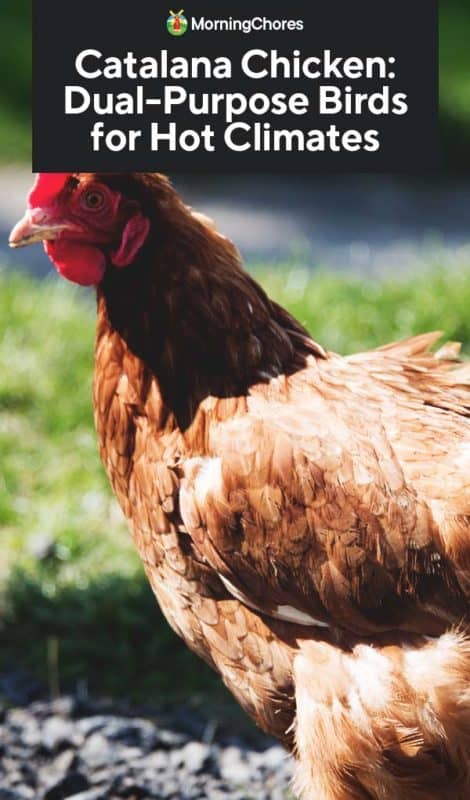
About Catalana Chickens
This charming breed originated in Spain during the late 1800s and debuted into the general public in 1902. By 1949, Catalanas had been embraced and accepted into the Standard of Perfection with the American Poultry Association.
A hefty jump in the breed’s popularity occurred in 1998 when an Argentinian breeder distributed Catalana hatching eggs at the 10,000 bird poultry show in Ohio.
Catalanas are currently only recognized by the American Poultry Association in the Buff color variety.
Catalana Characteristics
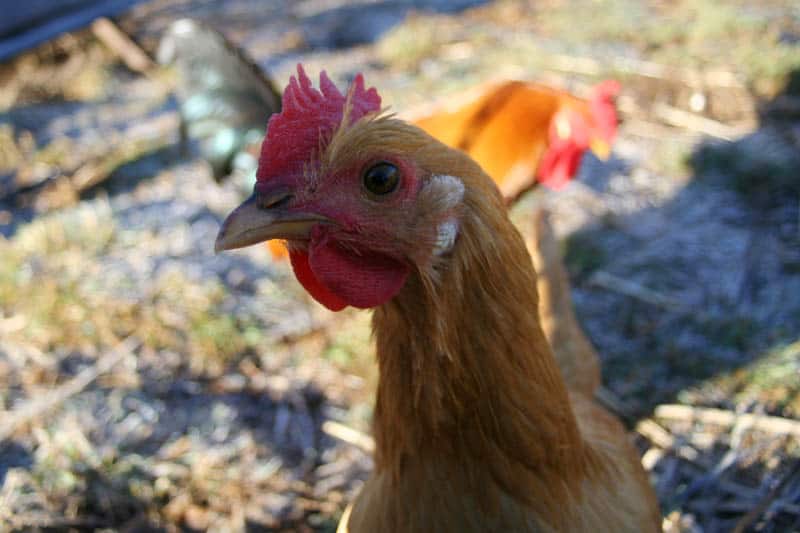
1. Size and Weight
Because of the nature of dual-purpose breeds, Catalanas is a decent-sized chicken. Roosters tend to weigh around 8 pounds when fully grown. Hens are naturally smaller, tipping the scales at about 6 pounds at full-grown weight.
2. Temperament
Catalanas don’t tend to have aggressive personalities, but they don’t want to cuddle up in your lap either. You will likely find your Catalanas actively foraging for their next snack and chasing butterflies.
Catalana hens don’t have any strong tendencies to go broody, so don’t count on them to raise chicks any time soon.
3. Egg Production
You can’t expect outstanding egg production with Catalanas, but it’s not too shabby either. Catalanas will produce creamy-white eggs for the most part with the occasional pinkish looking egg. A single Catalana hen will lay between 150-200 eggs in a calendar year.
4. Meat Production
Meat production will always be optimal with a true meat breed, but one can’t complain over the meat they get from a Catalana chicken. These chickens have been reviewed as birds with excellent carcasses and succulent meat.
In Spain, Catalana roosters are commonly used for capon meat production. (Castrating a rooster before sexual maturity to make the meat more tender)
Caring for Catalanas
1. Feeding and Nutrition
If you’re raising your Catalanas from chicks, you’ll need to supply them with a good chick starter for the first several weeks of their lives. Around 8-12 weeks old, switch your growing chickens over to a good laying feed to prepare their bodies for egg production.
It’s ideal to leave your birds on this feed for the rest of their productive lives because it contains about all the nutrients their diets need.
Occasionally your hens may come up short on calcium, resulting in a soft-shelled egg. This is generally a simple fix, and you can read more about it in our post on soft egg issues.
Crushed up eggshells or oyster shells are both excellent sources of extra calcium for your hens. Always give your birds supplements in a separate dish from their food so they can eat the supplements only as they need it.
2. Housing and Fencing
If at all possible, you’ll want to allow your Catalanas to free-range. If you don’t have the setup to free-range your flock, this may not be the breed for you. Catalanas are flighty creatures and will likely frustrate you to no end in their efforts to fly out of the run.
For the coop, provide a minimum of 4 square feet of space per chicken. Catalanas carry the reputation for wanting to roost in trees, so it’s important to instill safe roosting habits from an early age with your Catalana chicks.
3. Health Issues and Care
One thing that Catalanas don’t tolerate well is cold weather. Since this breed originated in Spain, it will thrive in a warmer climate. Other than intolerance to cold weather, Catalanas seems to be a pretty healthy and robust breed.
As always, keep a watchful eye on your flock to catch issues such as sickness and parasites before they spiral out of control.
4. Breeding
Breeders that are passionate about breeding and distributing Catalanas will greatly help boost this breed’s popularity. When breeding Catalanas, it’s important to breed for key features such as white earlobes, large combs, blue slate shanks and toes, as well as reddish bay eyes.
Breed Alternatives
1. Buff Orpington
Catalanas share many similarities with Buff Orpingtons, including breed purposes and how they look. However, what Catalanas don’t have such as mothering capabilities and cold tolerance, Buff Orpingtons proudly sport.
For those that like the Catalana but want some qualities the breed doesn’t have, Buff Orpingtons could be your answer.
Did You Know?
While Catalana is the widely used name for this breed of chicken, they can go by many names! Other names that this bird goes by are El Prat, Prat, and Catalana Del Prat Leonada in recognition of the farming area of El Prat de Llobregat.
Many dual-purpose breeds such as Wyandottes and Cochins are fantastic, but not suited to hot weather. If you live in a hot climate, this is the breed for you!
